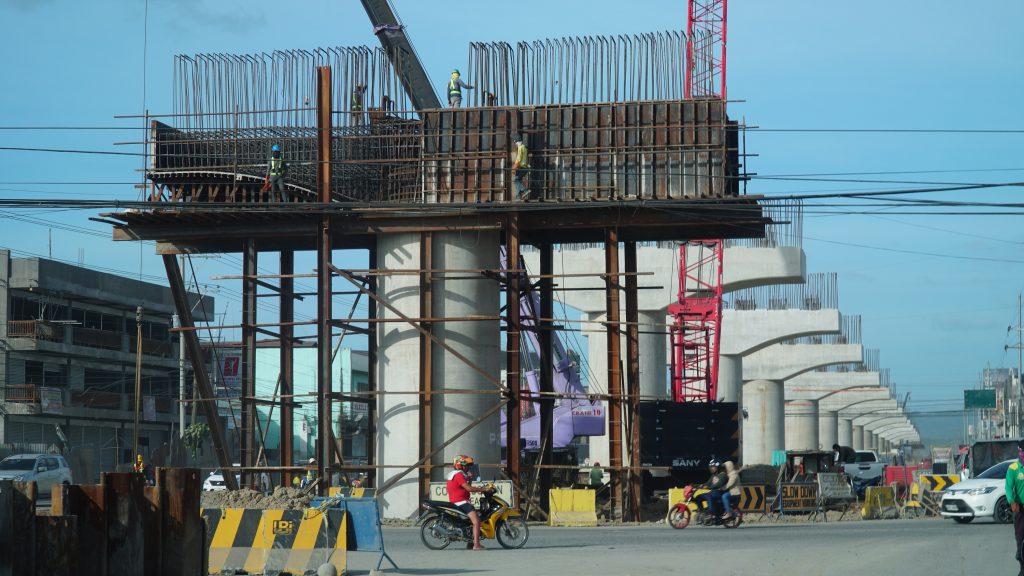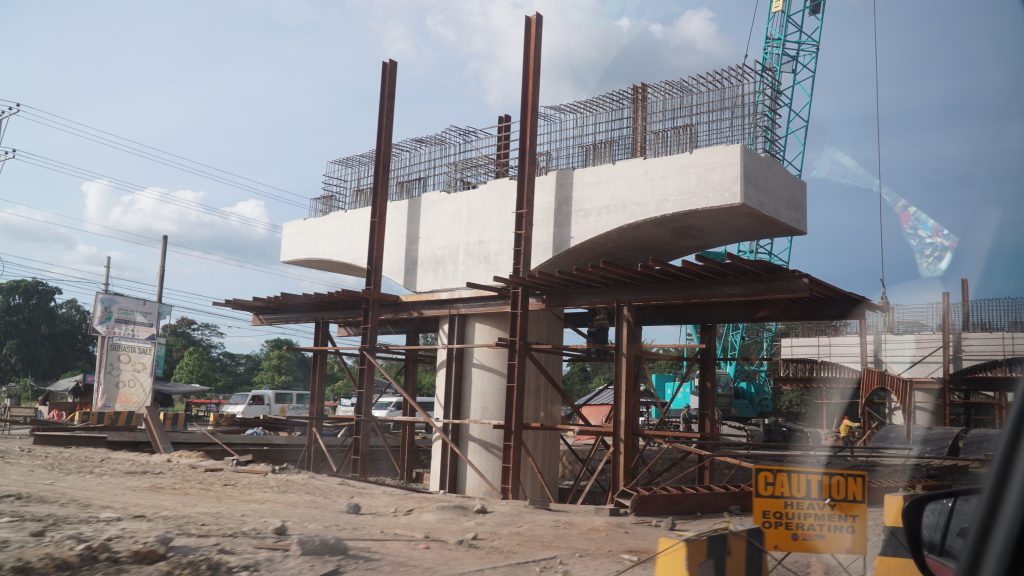AS THE ELECTORAL CAMPAIGN in Davao del Norte heats up in crescendo, a raging debate has broken out involving an issue that has polarized voters of the province, the rambunctious social media netizens included.

The gathering tempest is about the construction in Tagum City of a gigantic flyover, which factotums of the Department of Public Works and Highways call “a bridge that neither spans a river nor crosses a waterway.” For easy reference, Davao City has two similar structures built decades ago– one located in Agdao District at the intersection where Cabaguio Ave.. Leon Garcia St., Lapulapu Ave., and R. Castillo St. converge, and the other at the crossing of Dacudao Ave. and J. P. Laurel Ave. in the Bajada area.
Instead of spanning a body of water, the controversial behemoth in Tagum is being constructed above the Davao-Agusan national highway, particularly on a 1.6-kilometer portion which cuts across the central business district of the city.

It is not difficult to imagine the distraction and destruction that existing trade and commerce activities in the area can suffer while the structure is being built. In many cases the harm is permanent. Many thriving business establishments in the national capital region and Metro Cebu have been obliterated, no thanks to the construction of flyovers and light railway tracks over them.
The cost of this flyover in Tagum is nearly P4 billion, a whopping amount comparable to the budgets for some big ticket projects being constructed or considered for construction in the Davao Region in line with the Duterte government’s much-ballyhooed Build Build Build program. The construction cost is at best tentative, as it could double if not triple as in other government projects of this magnitude after completion. Remember the Davao (Francisco Bangoy) International Airport? It was budgeted with P2.7 billion by the Fidel Ramos administration which started it. When completed two administrations and numerous price manipulations after, the cost had ballooned to P5.4 billion!
The Tagum flyover was conceptualized during the time of Rep. Pantaleon Alvarez as House Speaker. Highways Secretary Mark Villar was reported to have claimed that his department found the project in last year’s General Appropriations Act (GAA) and therefore implemented it posthaste.

Being hotly discussed in both traditional and social media are two aspects of the project –prioritization and consultation. Flyover critics claim its planners pushed the multi-billion peso project at the expense of Davao del Norte’s more urgent problems, one of which is the frequent flooding that visit the province, almost always leaving behind a wide swath of destruction to farmlands in terms of crops, properties and livestock, and sometimes, human lives.
The critics argue that the debilitating inundations hounding the disaster-prone province for so long should have been accorded more urgency over the flyover as indicated in the detailed list of projects recommended by development planners of local government units (LGUs) for funding. The list was allegedly ignored and supplanted with a completely different list not the one generated by the development councils in the barangay, municipal, city, provincial and regional levels pursuant to a consultative process in project planning that is mandated by the Local Government Code and other related laws and executive orders
The democratic practice of consultation has often resulted in the improvement or total scuttling of development projects, including flyovers. It happened many times in Metro Manila and Cebu. Let’s not go far. The planned flyover projects in Matina Crossing and Ulas in Davao City were scuttled after failing to get the imprimatur of the enlightened Davao citizenry. Studies by the DPWH together with international assistance providers later indicated that erecting the flyovers would not really solve traffic congestion in these areas as planners mistakenly thought before.

Aside from the absence of proper public consultation, the Tagum flyover allegedly also lacks feasibility study and traffic impact assessment, all sine qua non before a major infrastructure undertaking like a flyover could proceed.
To positive thinkers, the ongoing public debate is really an opportunity for Congressman Alvarez and his ilk to answer all the accusations, serious and frivolous, in the fracas over the Tagum flyover.
The results of the local elections in May could be an indication which side of debaters the voters believed in.






